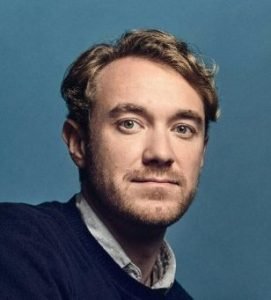Onno Faber never expected to become a medical innovator. He was living the American dream. Born and raised in The Netherlands, Faber embraced entrepreneurship early, as the founder of a software engineering company during high school. He eventually moved to the U.S. to grow a technology company in the mobile communication space. But soon after arriving in Silicon Valley, he began to lose hearing in his left ear. “As it turned out, there was a brain tumor on my hearing nerve and further scans and research showed additional tumors in my brain and spinal cord”, Faber recalls. The eventual diagnosis was a rare genetic disorder called NF2, which leads to tumors of the nervous system including in the brain, spinal cord, and nerves.
Rare Diseases Are Actually Common
 “This is when I first learned about rare diseases,” says Faber. “My sensory nerves were threatened, I was deaf on the left side and there was the potential for serious vision problems and mobility issues.” After consultations with doctors, Faber was told there were no drugs for his disease and eventually found a treatment through his own research and community engagement that stabilized the tumor growth and insured he would not lose hearing, mobility, and vision for the time being. Faber recalls saying to himself back then: “Instead of thinking about it as a devastating diagnosis, how can I turn it, spin it around, and create a positive impact for all people finding themselves in a similar situation?”
“This is when I first learned about rare diseases,” says Faber. “My sensory nerves were threatened, I was deaf on the left side and there was the potential for serious vision problems and mobility issues.” After consultations with doctors, Faber was told there were no drugs for his disease and eventually found a treatment through his own research and community engagement that stabilized the tumor growth and insured he would not lose hearing, mobility, and vision for the time being. Faber recalls saying to himself back then: “Instead of thinking about it as a devastating diagnosis, how can I turn it, spin it around, and create a positive impact for all people finding themselves in a similar situation?”
Faber researched his condition obsessively, working to understand not only his own rare disease but how the broader healthcare industry diagnoses and treats rare diseases. “The first thing I learned was that rare diseases are actually very common,” he says. “When you hear that one in 50,000 has my particular disease, that sounds ‘rare’. But as soon as I learned there are thousands of rare diseases, the reality is that one in 10 people in the US has a rare disease–or about 20-30 million people.”
Despite the surprisingly large market and the fact that 95 percent of rare diseases have no FDA-approved therapy, Faber also came to learn that there is a little commercial incentive to work on rare disease treatments. This revelation inspired a new-found passion and the founding of a rare disease “drug hunting” company built around patients and families dealing with these diseases. “We asked ourselves, what types of communities need to be built?” Faber recalls. “How can we align these communities to make the 10,000 small problems a big problem and ultimately create an algorithm and engine to scale rare disease diagnosis and treatment?”
Your Friendly, Neighborhood Sequencing Machine
As Faber continued his research, another tumor appeared, pressing against his brain stem. But Faber is a natural entrepreneur. Once that tumor was successfully removed, Faber didn’t let it bring him down. Instead, he decided to take things further. “A friend of mine was a computational biologist and had a sequencing machine in his living room,” Faber recalls. “That’s the advantage of living in Silicon Valley.” Faber was able to sequence and analyze his own DNA, and that led to a project with Google. As Faber remembers, “We had 400 people coming for a weekend to hack on the data and we eventually found the first drug that I tried to repurpose for my condition.”
This experience led Faber to continue working on how to combine sequencing and drug discovery into one continuous process. He launched Rarebase in 2020 with his co-founder. “The goal,” he says, “was to find ways to make the rare disease a scalable problem, and we wanted to start with the patient and the families.”
Building Knowledge at Scale
“Today, sequencing is mostly used for disease diagnosis,” Faber continues. “At Rarebase, we also use sequencing to find treatments. We can sequence every single experiment and, for example, can determine what a particular drug does to the expression of the DNA in a specific cell type. That allows us to create hypotheses around which drugs might reverse the underlying biology of a rare disease.” The goal, ultimately, is to use the platform to matchmake between drugs and as many of the more than 7,000 rare genetic diseases as possible.
The Road Ahead
Ask Faber what he is looking forward to, and he says, “the technology will evolve to become cheaper and more scalable so we can generate more and more data,” he continues, “and, ultimately, help rare disease patients find treatments so they can have a better quality of life. The technology is there. We just have to enable access so that rare disease patients can benefit from it too.”

